Schönbrunn Zoo is the site of a wide spectrum of research endeavors. These range from animal keeping, cognition research and behavioral studies, to reproduction, physiology and nutrition, to veterinary medicine and conservation medicine. As the oldest zoo in the world, Schönbrunn is also a subject of historical research. Moreover, the more than two million visitors each year make the zoo interesting for the social sciences as well.
ZIMS – Zoological Information Management System
Beyond providing observational data, the zoo can also collect feathers, fur, hair, eggs, tissues and blood samples from its wild animal populations for research purposes – all the while adhering to the respective legal and animal hygiene regulations. The documented life histories of individual animals also serve as an important resource. These data are collated in the Zoological Information Management System (ZIMS). ZIMS is operated by the non-profit organization Species360 and generates information from almost 1200 member institutions. Schönbrunn Zoo has been regularly compiling data from about 700 animal species.
Research project: Acoustic communication in cheetahs
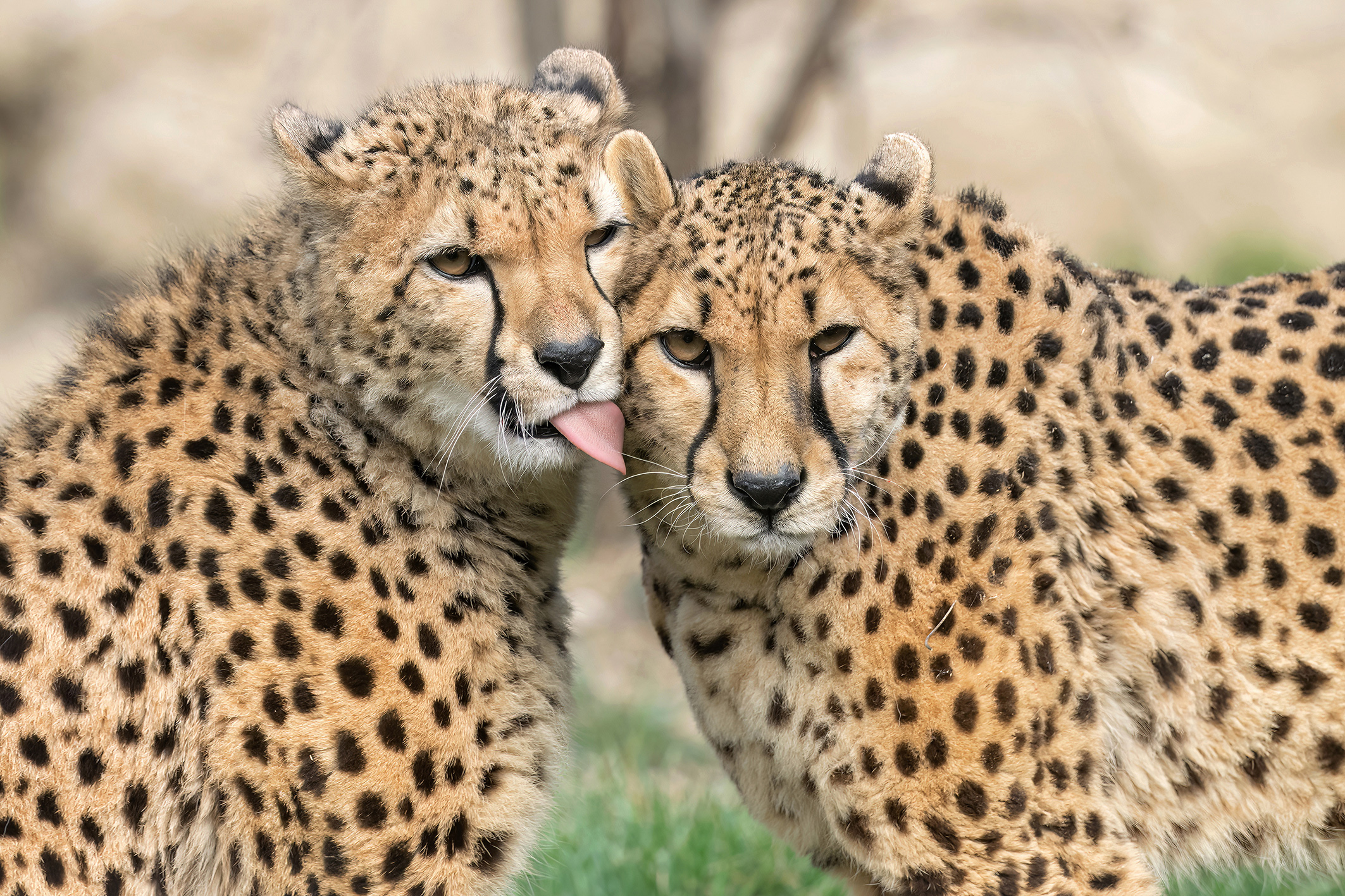 Under the project management of Angela Stöger-Horwath, Katharina Prager, a doctoral student at the Austrian Academy of Sciences, is investigating the acoustic communication of cheetahs. These felines exhibit very diverse vocalizations. When communicating with known conspecifics, cheetahs often produce high-pitched calls, known as "chirps". A part of the research will focus on figuring out why cheetahs use “chirps” as contact calls. More information
Under the project management of Angela Stöger-Horwath, Katharina Prager, a doctoral student at the Austrian Academy of Sciences, is investigating the acoustic communication of cheetahs. These felines exhibit very diverse vocalizations. When communicating with known conspecifics, cheetahs often produce high-pitched calls, known as "chirps". A part of the research will focus on figuring out why cheetahs use “chirps” as contact calls. More information
Research project: Mirror self-recognition
 The orangutans at Schönbrunn Zoo will take part in an innovative study by the Max Planck-Institute for Evolutionary Anthropology. Lead scientist, Dr. Kathrin Kopp comes to Vienna with a set of special, unbreakable mirrors. Vladimir, Sol, Mota, Surya, Sari und Kendari will therefore be able to explore their new toys completely at ease and may provide important insights into their behavioural and cognitive biology. More information
The orangutans at Schönbrunn Zoo will take part in an innovative study by the Max Planck-Institute for Evolutionary Anthropology. Lead scientist, Dr. Kathrin Kopp comes to Vienna with a set of special, unbreakable mirrors. Vladimir, Sol, Mota, Surya, Sari und Kendari will therefore be able to explore their new toys completely at ease and may provide important insights into their behavioural and cognitive biology. More information
Research project: crows at the zoo
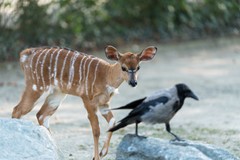 Beyond enjoying the zoo animals, visitors can also observe numerous wild crows at Schönbrunn. A citizen science project of the University of Vienna in cooperation with the Konrad Lorenz Research Center and the zoo is focused on the behavior of these black-plumed zoo guests. The special feature: all zoo visitors are invited to collect research data on their own at the zoo. More information
Beyond enjoying the zoo animals, visitors can also observe numerous wild crows at Schönbrunn. A citizen science project of the University of Vienna in cooperation with the Konrad Lorenz Research Center and the zoo is focused on the behavior of these black-plumed zoo guests. The special feature: all zoo visitors are invited to collect research data on their own at the zoo. More information
Research project: Foot-flagging frogs
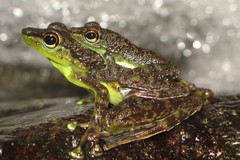 Beyond the quacking typical for frogs, foot-flagging frogs also communicate through visual signals. Their conspicuous leg waving is considered to be an intraspecific communication signal. Schönbrunn Zoo has been operating a breeding and research project with two species of foot-flagging frogs since 2008. This long-term project is devoted to studying the physiology and evolution of these signals along with the multimodal communication of these frogs. More information
Beyond the quacking typical for frogs, foot-flagging frogs also communicate through visual signals. Their conspicuous leg waving is considered to be an intraspecific communication signal. Schönbrunn Zoo has been operating a breeding and research project with two species of foot-flagging frogs since 2008. This long-term project is devoted to studying the physiology and evolution of these signals along with the multimodal communication of these frogs. More information
Research project: Anthropomorphism
 Anthropomorphism refers to our tendency to use human traits in describing and interpreting the behavior of animals. At the zoo, researchers from the University of Vienna use questionnaires to determine how our visitors perceive the zoo animals, above all primates. More information
Anthropomorphism refers to our tendency to use human traits in describing and interpreting the behavior of animals. At the zoo, researchers from the University of Vienna use questionnaires to determine how our visitors perceive the zoo animals, above all primates. More information
Research project: Ravens
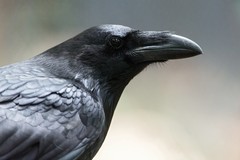 The Schönbrunn raven pair Munia und Rufus stem from Haidlhof – a research station of the University of Vienna. Experiments are being conducted with the raven colony there to study the intelligence of these birds. The focus is on their social learning and communication. This scientific research is also being extended to the individuals at the zoo. More information
The Schönbrunn raven pair Munia und Rufus stem from Haidlhof – a research station of the University of Vienna. Experiments are being conducted with the raven colony there to study the intelligence of these birds. The focus is on their social learning and communication. This scientific research is also being extended to the individuals at the zoo. More information
Research project: Indian frogs and toads
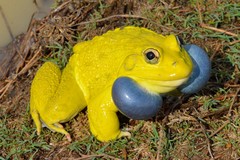 Der Indus Valley bullfrog and the Asian common toad exhibit a spectacular mating behavior: the males change color from an inconspicuous brown to bright yellow during the mating period. Nonetheless, little is known about the biology of these animals. The zoo is studying their behavioral biology in cooperation with a PhD student from the University of Vienna. More information
Der Indus Valley bullfrog and the Asian common toad exhibit a spectacular mating behavior: the males change color from an inconspicuous brown to bright yellow during the mating period. Nonetheless, little is known about the biology of these animals. The zoo is studying their behavioral biology in cooperation with a PhD student from the University of Vienna. More information
Research project: Yawning
 The animals at the zoo were part of the world’s largest yawning study, conducted in a cooperative effort involving researchers from Austria, the Czech Republic, Switzerland, the USA and The Netherlands. One of the leading authors was the biologist Margarita Hartlieb, who conducted the study in the framework of her Master thesis at the University of Vienna. More information
The animals at the zoo were part of the world’s largest yawning study, conducted in a cooperative effort involving researchers from Austria, the Czech Republic, Switzerland, the USA and The Netherlands. One of the leading authors was the biologist Margarita Hartlieb, who conducted the study in the framework of her Master thesis at the University of Vienna. More information
Research project: Feed box
 The student Jonas Homburg posed tricky brain teasers to the zoo animals in the framework of his Master thesis. He placed a feed box with different puzzle doors into the enclosures of Oriental small-clawed otters, prairie dogs and European ground squirrels and observed how they solved the tasks. This also proved to be quite fun for the visitors to watch. More information
The student Jonas Homburg posed tricky brain teasers to the zoo animals in the framework of his Master thesis. He placed a feed box with different puzzle doors into the enclosures of Oriental small-clawed otters, prairie dogs and European ground squirrels and observed how they solved the tasks. This also proved to be quite fun for the visitors to watch. More information
Research project: Giant jellyfish
 At one time their very existence was doubted, today they are being intensively studied. The Giant jellyfish, with its nearly 60 cm umbrella diameter, is of great interest to researchers. The marine biologist Karen Kienberger provided polyps of this species to Schönbrunn Zoo, where they successfully completed their life cycle – a world’s first! Moreover, all the developmental stages were photographed and data collected, all of which were provided to Kienberger to advance her research. More information
At one time their very existence was doubted, today they are being intensively studied. The Giant jellyfish, with its nearly 60 cm umbrella diameter, is of great interest to researchers. The marine biologist Karen Kienberger provided polyps of this species to Schönbrunn Zoo, where they successfully completed their life cycle – a world’s first! Moreover, all the developmental stages were photographed and data collected, all of which were provided to Kienberger to advance her research. More information
Research project: Parasite monitoring
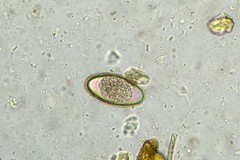 The veterinarian and parasitologist Dr. David Ebmer is studying the fascinating parasite fauna of our zoo animals at Schönbrunn Zoo in close collaboration with the zoological curators and the animal caretaker team. Regular check-ups yield valuable data that enable us to continuously improve our hygiene concepts. More information
The veterinarian and parasitologist Dr. David Ebmer is studying the fascinating parasite fauna of our zoo animals at Schönbrunn Zoo in close collaboration with the zoological curators and the animal caretaker team. Regular check-ups yield valuable data that enable us to continuously improve our hygiene concepts. More information
Research project: Elephant trunk
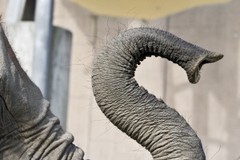 The biologist Lena Kaufmann spent several weeks studying the behavior of our African elephants. Her observations and feeding experiments were designed to determine how often and in what manner the elephants touch each other and what role their nimble trunks play in this process. More information
The biologist Lena Kaufmann spent several weeks studying the behavior of our African elephants. Her observations and feeding experiments were designed to determine how often and in what manner the elephants touch each other and what role their nimble trunks play in this process. More information
Research project: Giant tortoises
 Giant tortoises are well known for their slow movements and longevity. The Hebrew University initiated an experimental study to examine the cognitive abilities of these fascinating reptiles. In the framework of this study, the Schönbrunn Giant tortoises Schurli, Menschik and Mädi were trained to associate a visual signal with food. Many years later, the animals were still able to repeat the assigned tasks. More information
Giant tortoises are well known for their slow movements and longevity. The Hebrew University initiated an experimental study to examine the cognitive abilities of these fascinating reptiles. In the framework of this study, the Schönbrunn Giant tortoises Schurli, Menschik and Mädi were trained to associate a visual signal with food. Many years later, the animals were still able to repeat the assigned tasks. More information
Research project: Elephant communication
 The student Christopher Gorofsky had a job that was the envy of many: for three months he spent every day standing in the elephant enclosure and used specially designed equipment to eavesdrop on the female calf Kibali and her mother Numbi. This provided key data for his Master thesis titled “Early mother-calf communication in African elephants at the zoo”. More information
The student Christopher Gorofsky had a job that was the envy of many: for three months he spent every day standing in the elephant enclosure and used specially designed equipment to eavesdrop on the female calf Kibali and her mother Numbi. This provided key data for his Master thesis titled “Early mother-calf communication in African elephants at the zoo”. More information
Research project: Panda twins
 Die rearing of the panda twins Fu Feng und Fu Ban was a world sensation. Yang Yang was the first panda female in captivity to raise twins without human support. This research at the zoo provided scientific confirmation that Yang Yang is a “super mom”. A nesting box camera helped determine how Yang Yang was able to solve the time-consuming problem of raising twins. More information
Die rearing of the panda twins Fu Feng und Fu Ban was a world sensation. Yang Yang was the first panda female in captivity to raise twins without human support. This research at the zoo provided scientific confirmation that Yang Yang is a “super mom”. A nesting box camera helped determine how Yang Yang was able to solve the time-consuming problem of raising twins. More information
